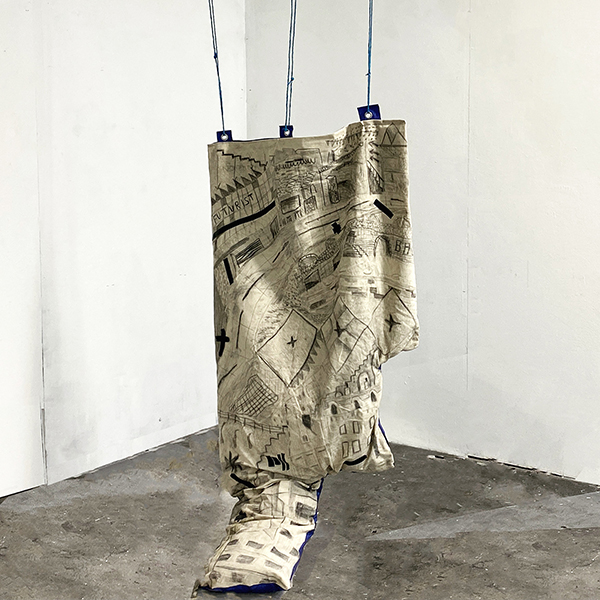Molly is currently in the final year of her BA (Hons) Fine Art degree at the University of Leeds and is originally from the town of Scarborough, on the Yorkshire coast. Due to the pandemic, her practice became centred on the town, and it remains important to her practice.
Molly adopts a multidisciplinary process to her practice; primarily working across the boundaries of contemporary sculpture, drawing and assemblage art. Through drawing and making she explore landscape, environment, and history. She identifies as a landscape artist, but it could be said that she makes work that opposes the traditional ideologies associated with this field.
“My practice could be described as acrimonious, jumbled, and tumultuous stemming from multiple resources, experiences, and histories. “
She likes to use household and non-art materials; Polyfilla, plastic tarp, bail twine, electrical tape, and sand following the modernist example of bricolage and do-it-yourself mentality. She applies these techniques and procedures to multimedia sculptures, collaged drawings, and textured reliefs.
Research and context are integral to her process, and resources such as local Facebook group chats, historical videos on YouTube, family histories and local folklore books are often the starting point of her research. Over time she has amassed a personal archive of resources including photographs, maps, diagrams, and quotes.
From her research Molly uses drawing to generate a visual language that is abstract. From this overload of specialist information and research she makes reoccurring motifs such as nets, crosses, arrows and staircases. As well as referencing the imagery of guidebooks and maps and architecture.
Through a manipulation of geographical etymology and statistics which Molly applies to her work in the form of precise dimensions or titling, she sees her role as artist become multifaceted and conceptualised . Researcher, historian, geologist, and journalist converge beneath the seemingly straightforward title of artist.
Erosion term II: Slump is part of an ongoing series that explores the vernacular associated with types of erosion, which Molly uses as starting points to create reactive sculptures.
This current body of work explores the impact of the climate crisis on coastal communities, specifically the increasing rate of erosion due to rising sea levels and is inspired by Molly’s research into the case of the Holbeck Hotel which fell into the sea in 1993.
The term ‘Slump’ is a reference to a form of mass wasting that occurs when a coherent mass of loosely consolidated materials or a rock layer moves a short distance down a slope. This idea of movement, fall and drooping is aimed to be portrayed through the heavy recycled fabric stuffing that makes the sculpture sink to the floor.
Slump is made of plastic tarp, and canvas into which she has drawn with charcoal and graphite. Extra features have been added with electrical tape.
The use of household, cheap non art materials is important to Molly as she likes to test the possibilities and expectations of high culture and contemporary art.
The drawings on this sculpture show buildings and architecture that no longer exist, Molly uses archival images as references, to draw buildings such as the Futurist an old theatre in Scarborough that was torn down. She finds these images in Facebook group chats which she sees as integral community archiving tools. The overall imagery is an ode to a place that is firmly familiar but slowing being eroding away.


